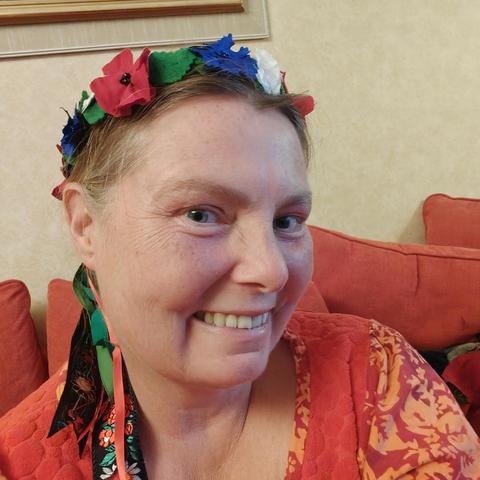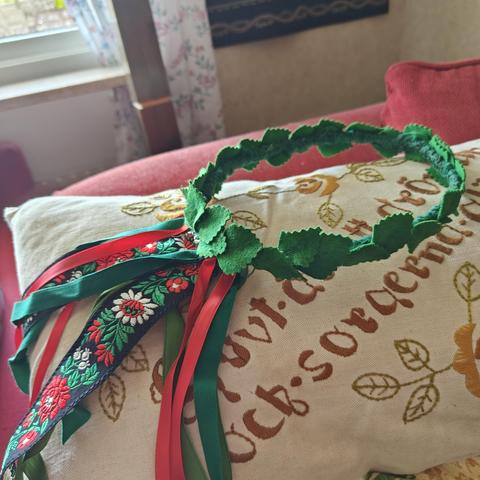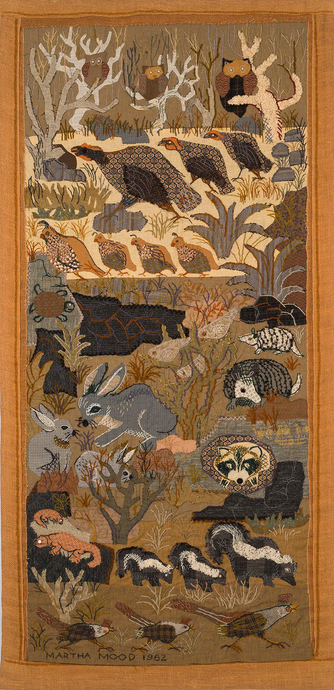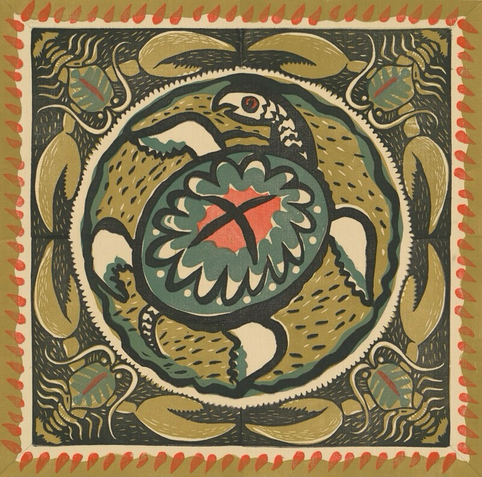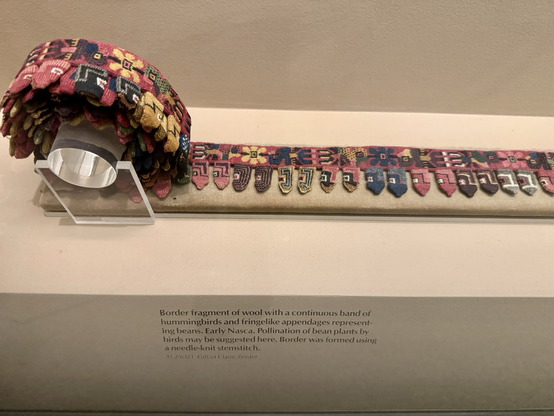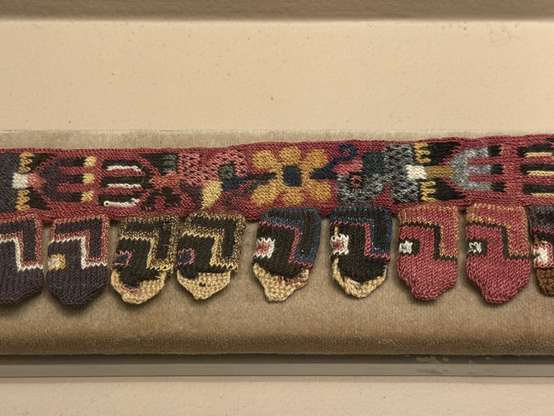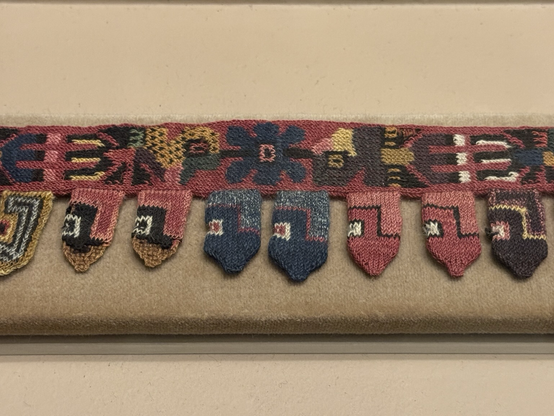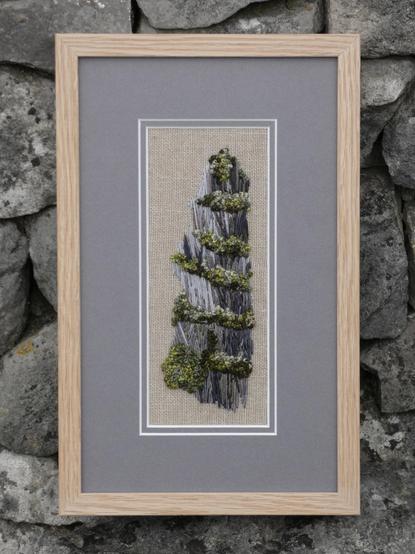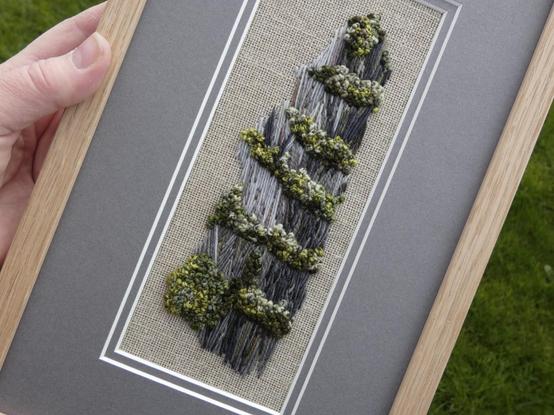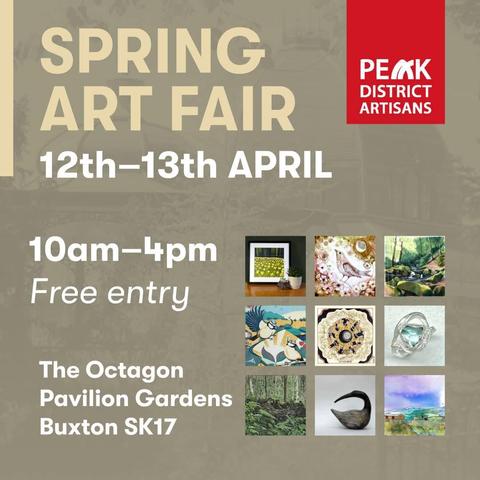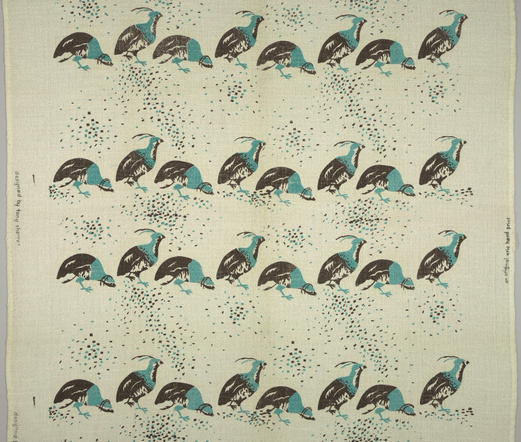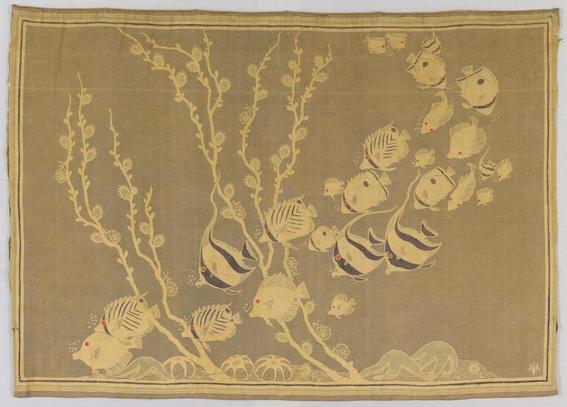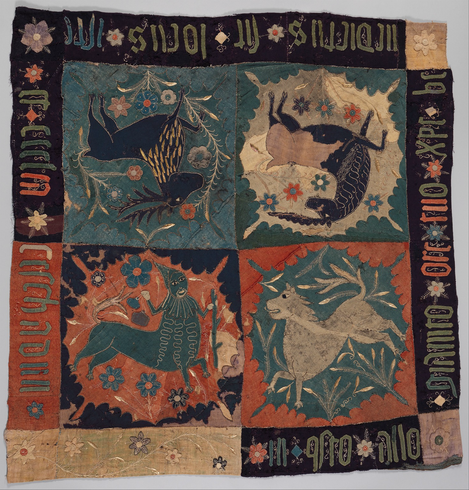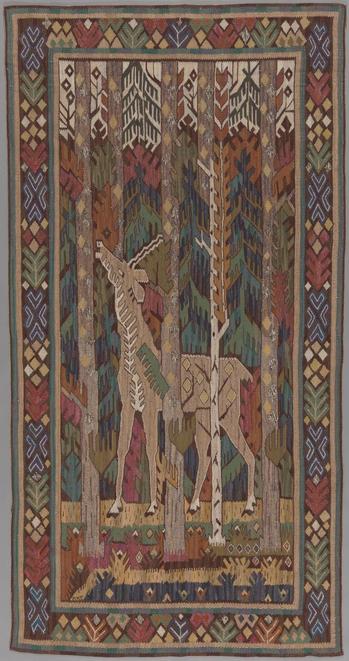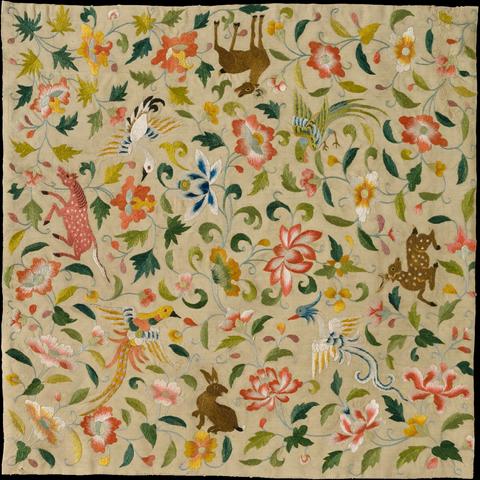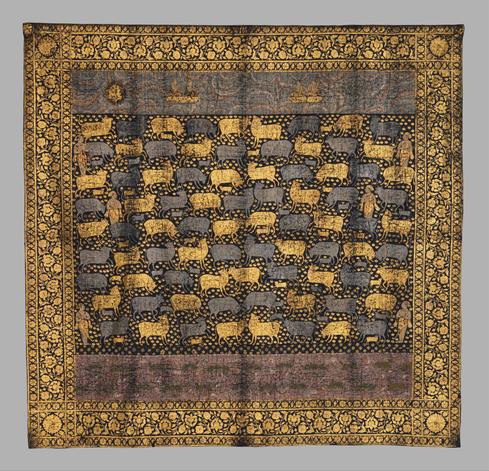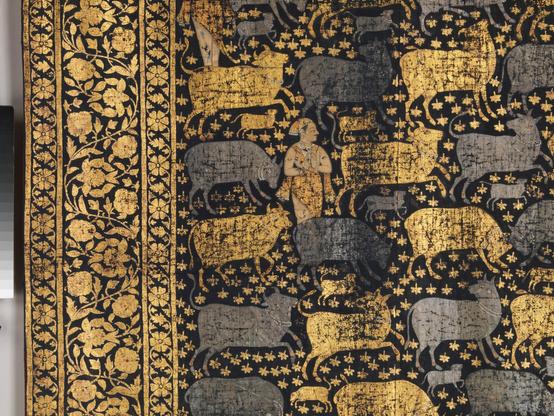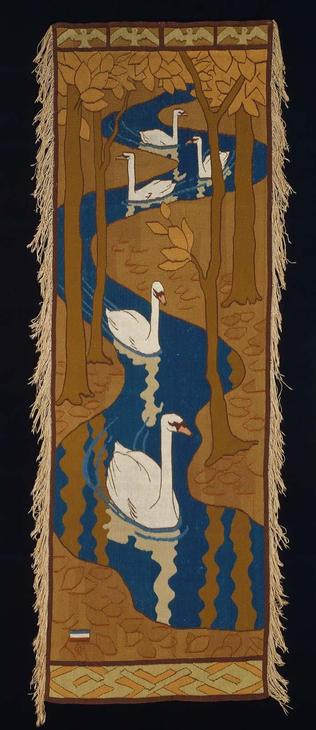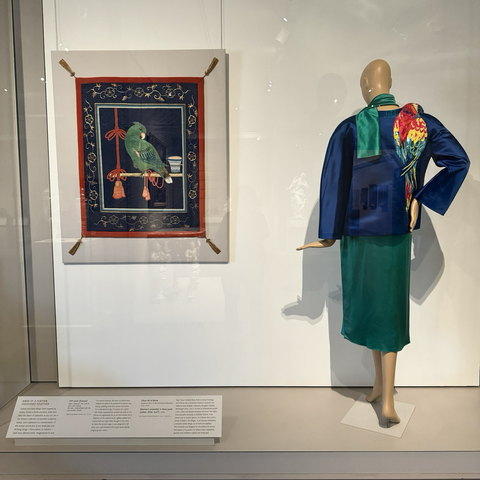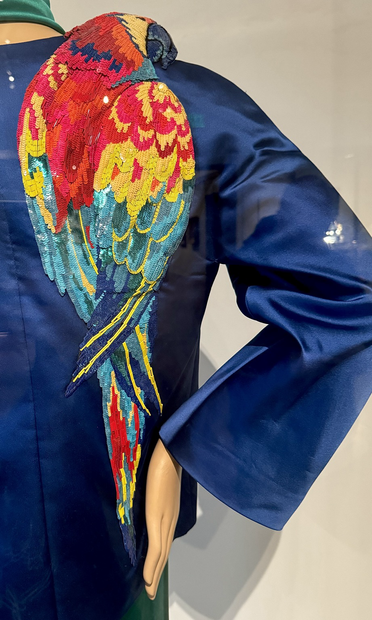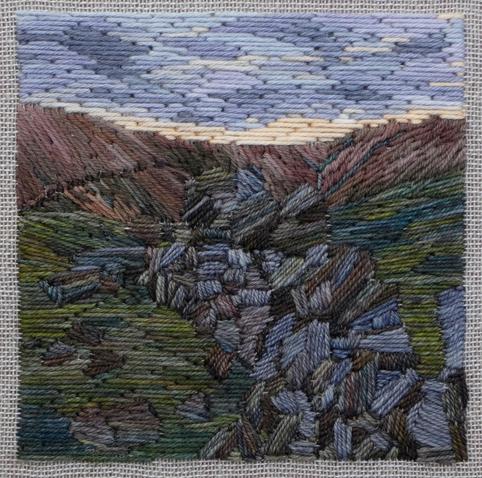#FashionHistory #HistoricFashion #TextileTuesday A piece from the 1780s on display at the National Costume Museum of Lisbon, that looks like it came from Hamilton on Broadway. #museum #Photography 📸 #WestCoastKin
#TextileTuesday
#textiletuesday
Yesterday I made wreath from brass wire, wool roving, cotton yarn (crocheted around the wire and wool), filled wool fabric for leaves, ribbons and silk and cotton fabric for flowers.
A fun find for #TextileTuesday : so many cool animal friends in one work! 😍
Martha Mood (USA, 1908-1972)
First Families of Texas, 1962
Appliqué with beads
67 1/4 x 33in (170.8 x 83.8cm)
McNay Art Museum 1982.51 https://collection.mcnayart.org/objects/3363/first-families-of-texas
#WomenArtists
#TurtleTuesday + #TextileTuesday :
#Turtle , 1937-8
Federal Art Project (WPA), Milwaukee, WI, USA
Color woodcut on cotton fabric
sheet: 45.09 × 41.91 cm (17 3/4 × 16 1/2 in.)
NGA DC 2015.143.1518.6: https://www.nga.gov/artworks/193887-turtle
More #TextileTuesday:
“Cotton textile painted with a flounder-like #fish.
Chancay style, Peru.”
[Chancay culture: c.1000-1470CE]
On display at @ AMNH NYC
#TextileTuesday:
“Border fragment of wool with a continuous band of #hummingbirds and fringelike appendages representing beans. Early Nasca [Nazca, Peru, c.1-450 CE]. #Pollination of bean plants by birds may be suggested here.“
On display at American Museum of Natural History [41.2/6321]
#BirdsInArt #AndeanArt #IndigenousArt
For #TextureTuesday and #TextileTuesday I give you Dinorwic Quarry (as NOT seen on #LAOTY 😉) framed and ready for the @peakdistrictartisans #SpringArtFair 12/13 April - Not long!
@fibrearts
@textilearts
@embroidery
#Art #FineArtInStitch #TextileArt #TextileArtist #embroidery #stitching #embroideryart #fineart #ContemporaryArt #needlework #MastoArt #ArtistsOnMastodon #FediArt #artist #CreativeToots #BuyIntoArt #FediGiftShop #ArtMarketplace, #ArtForSale #MastodonArt
#TextileTuesday :
Textile, California Quail
Designed by Tony Sharrar, Manufactured by Eric Hand Prints, USA, 1952
Cotton, screen printed on plain weave; H 102.5 x W 122 cm (40 3/8 x 48 1/16 in.)
Cooper Hewitt 1953-89-1 https://collection.cooperhewitt.org/objects/18398887/
#BirdsInArt
#TextileTuesday :
Lydia Bush-Brown (American, 1887–1984)
Hawaiian #Fishes, c. 1917
Silk hanging, H x W: 70 x 99 cm (27 9/16 x 39 in.)
Cooper Hewitt 1985-2-1
https://collection.cooperhewitt.org/objects/18804971/
#WomenArtists
#TextileTuesday :
Textile Fragment with #Unicorn , #Deer , #Centaur , and #Lion
Made in Scandinavia (possibly Sweden), c.1500
Wool intarsia & applique with gilt leather & linen embroidery
52 3/4 × 52 3/8 in. (134 × 133 cm)
The Met Cloisters 2011.430: https://www.metmuseum.org/art/collection/search/479598
#TextileTuesday #TapestryTuesday:
Märta Måås-Fjetterström (Sweden, 1873-1941)
Tapestry, c.1915
Handwoven with linen yarn in warp & wool yarn in weft
H 235 cm x W 123 cm
Nasjonalmuseet OK-1995-0066: https://www.nasjonalmuseet.no/en/collection/object/OK-1995-0066
#WomenArtists
#TextileTuesday:
Textile with Animals, Birds, and Flowers
Eastern Central Asia, late 12th–14th century
Silk embroidery on plain-weave silk
14 5/8 x 14 7/8 in. (37.1 x 37.8 cm)
Metropolitan Museum of Art, New York 1988.296: https://www.metmuseum.org/art/collection/search/39737
For #TextileTuesday + #CowAppreciationDay 🐮🐄:
Pichhwai for the Festival of #Cows [Gopashtami]
India, Deccan, Aurangabad (?), late 18th c.
Painted & printed gold & silver leaf & opaque watercolor on indigo-dyed cotton
97 5/8 x 103 1/8 in. (248 x 262 cm)
Met 2003.177: https://www.metmuseum.org/art/collection/search/65576
#IndianArt #SouthAsianArt #HinduArt
For #TextileTuesday, check out all the cool animals on this wrapper!
Man’s Wrapper (Akunitan)
Akan, Ghana, 20th c. (before 1987)
Wool, 211.7 × 342.2 cm (83 3/8 × 134 3/4 in.)
Art Institute of Chicago 1986.1045: https://www.artic.edu/artworks/65193/man-s-wrapper-akunitan
#AfricanArt
#TextileTuesday / #TapestryTuesday :
Fünf Schwane, 1897
Designed by: Otto Eckmann (German, 1865–1902)
Woven by: The Kunstwebschule Scherrebek (German)
Woven wool & cotton, 241.3 x 107.3 cm (95 x 42 1/4 in.)
Museum of Fine Arts, Boston 1991.440: https://collections.mfa.org/objects/128196/tapestry-funf-schwane
#ArtNouveau #Jugendstil
#TwoForTuesday + #TextileTuesday :
Museum of Fine Arts, Boston display
1 Gift cover (fukusa)
Japan, Meiji era, late 19th - early 20th c.
Silk satin embroidered w/silk & metallic threads
2 Oscar de la Renta (American, b. Dominican Republic, 1932-2014)
Woman's ensemble in 3 parts, 1980s
#BirdsInArt
I might be a bit hit & miss on here atm as I had my second hip replacement last week. Doing OK though so in celebration of nearly a week post op here is a decent picture of my latest piece, Last of the Light Edale #PeakDistrict #Edale #TextileTuesday #FineArtInStitch #TextileArt #Art #embroidery
#stitching #embroideryart #fineart #ContemporaryArt #needlework
@fibrearts
@textilearts
@embroidery
#MastoArt #ArtistsOnMastodon #ArtMatters #FediArt #artist
#ArtOfTheDay #AYearForArt
#TextileArtist
Finished making a skulls & roses 💀 🥀 version of this dress pattern - good instructions and video tutorial
https://ikatee.fr/products/patron-de-couture-toronto-femme-robe-32-52-pdf
#TextileTuesday: 18th c. French bed hanging - lots of cool fantastical #birds & #dragons but check out the neat trio of #rhino #elephant & #camel in the center! Also a bonus cameleopard (#giraffe ).
On display at “Making Her Mark: A History of #WomenArtists in Europe, 1400-1800” exhibition at Baltimore Museum of Art

